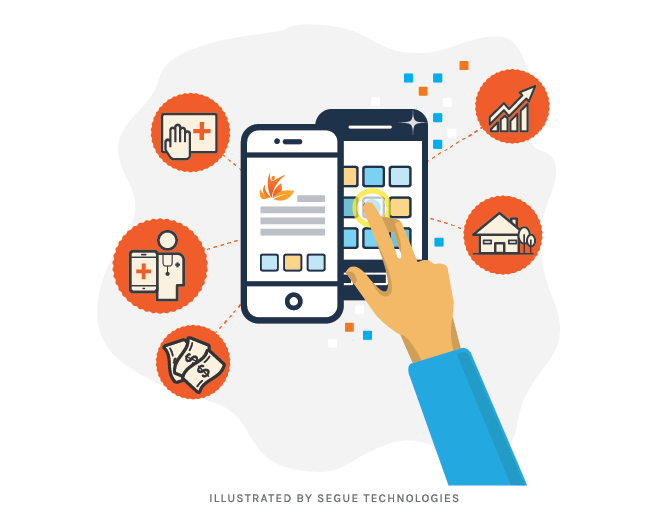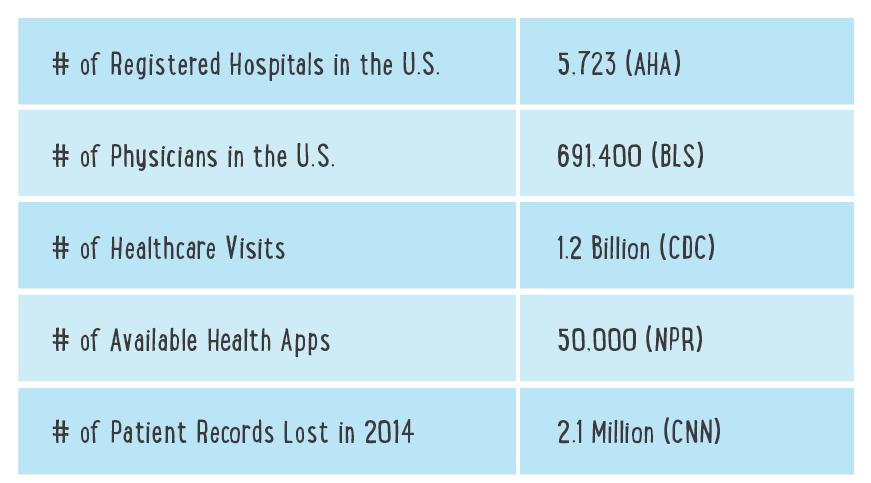 ‘
‘
Every single visit to the doctor, upload of personal health information on a new health app, and potential flu or other outbreak produces an enormous amount of data. This data can track diseases or epidemics, provide researchers with essential epidemiological information, or give an individual the tools and resources to understand more about their own health. Once we understand where the data comes from, it’s time to ask some difficult questions: Is the industry ready? And what is the patient’s role?
Collecting Healthcare Data
To understand the power, volume, and importance of healthcare data, check out the following numbers:

Every day patients, doctors, providers, and other data collection organizations are compiling and storing healthcare data. A recent Harvard Business Review (HBR) article titled How Analytics Can Guide Patient Care and Health Policy provides supporting evidence that the, “immediate analysis of big data (a general term for all industries that is defined as rapidly expanding data collection at an exponential rate from multiple sources and identifying new ways to process the information into a meaningful, comprehensible way) can illuminate healthcare trends, track diseases, and help to determine what treatments are most effective.” The security of patient data is also essential in order to ensure data is accurate and available to track healthcare trends, as well as protect the patient’s privacy.
Is the Healthcare Industry Ready for Big Data?
Another HBR post, Why Health Care May Finally Be Ready for Big Data, outlines the three reasons why the healthcare industry is ready for Big Data analytics:
- Data integration and collection
- Creating new knowledge with data
- Putting knowledge into action
These three categories are apparent and applicable to health industry insurers, providers and the like. What the list above excludes is the patient, as revealed in an NPR article, Sure You Can Track Your Health Data, But Can Your Doctor Use It? The patient is the source of all healthcare data and the article questions the value of the individual data collection tools (i.e. personal health trackers on an iPhone).
HealthIT.gov expands on the importance of patient-generated health data (PGHD). The PGHD are health-related data created, recorded, or gathered by or from patients to help address a health concern including, but are not limited to:
- Health history
- Treatment history
- Symptoms
- Lifestyle choices
How to Get Patients to Provide Data
In regards to patient data, the World Health Organization (WHO), articulately stated, “The key to effective patient information systems is to retain the link between the individual and the data collected over time and to make that data available to multiple health care providers when needed.” The difficulty of collecting accurate patient data is a true obstacle since more than half of patients, when surveyed, would withhold data or information from their provider.
In another survey, patients indicated they are becoming more willing to share health data if it is for a good reason. The good reason patients search for is trust. Trust is the connection for patients to believe the data is going to help others (and potentially themselves), as well as the secure and private distribution of this information.
Healthcare data is collected through a collaboration of providers, insurers, healthcare institutions and, most importantly, from the patient. The patient is the source of all data. The patient needs reassurance that the information provided is secure. The effort now is to develop the appropriate tools for transparency and security of healthcare data. All of the healthcare data, when available and usable, is an invaluable resource and tool for patients to protect their health and future.


